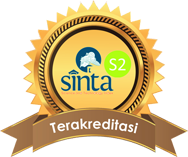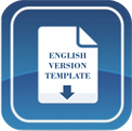Fostering Scientific Literacy through Integrated STEM Teaching Materials on Basic Laws of Chemistry
DOI:
https://doi.org/10.15575/jtk.v8i1.25833Keywords:
basic law of chemistry, scientific literacy, STEM, teaching materialsAbstract
The research aims to develop integrated teaching materials with a STEM approach to enhance students' scientific literacy, explicitly focusing on Basic Chemical Law Materials. The study utilized a Research and Development (R&D) approach employing the 4D (define-design-development-disseminate) research model. The research instruments included a test to measure students' scientific literacy and a non-test instrument to gather validation data from experts and assess student responses. The findings demonstrated high feasibility percentages, with 91.4% for content, 89% for presentation, 93.2% for language, 86.6% for scientific literacy, 93.2% for STEM, and 90% for media. Moreover, based on the scientific literacy test results, the N-gain pre-test and post-test indicated a substantial increase with a score of 0.74, classifying it as a high increase. Consequently, it can be concluded that developing integrated teaching materials with a STEM approach effectively enhances students' scientific literacy in basic laws of chemistry.
References
Amini, S., & Sinaga, P. (2021). Inventory of scientific literacy ability of junior high school students based on the evaluation of PISA framework competency criteria. In Journal of Physics: Conference Series (Vol. 1806, No. 1, p. 012017). IOP Publishing. Retrieved from https://iopscience.iop.org/article/10.1088/1742-6596/1806/1/012017/pdf
Andani, D. T., & Yulian, M. (2018). Pengembangan Bahan Ajar Electronic Book Menggunakan Software Kvisoft Flipbook Pada Materi Hukum Dasar Kimia di SMA Negeri 1 Panton Reu Aceh Barat. Jurnal IPA & Pembelajaran IPA, 2(1), 1–6. https://doi.org/10.24815/jipi.v2i1.10730
Anshar, M. A., Rahayu, Y. S., Erman, E., Karimah, K., & Rofiq, A. (2023). The Analysis of Umar Masud Junior High School Students’ Science Literacy Ability. Jurnal Penelitian Pendidikan IPA, 9(2), 926-930. Retrieved from https://doi.org/10.29303/jppipa.v9i2.2667
Ardianto, D., & Rubbini, B. (2016). Comparison of Students’Scientific Literacy in Integrated Science Learning Through Model of Guided Discovery and Problem-BasedLearning. Jurnal Pendidikan IPA Indonesia,5(1), 31-37. https://doi.org/10.15294/jpii.v5i1.5786.
Asfuriyah, I., Haryani, S., & Harjito, H. (2017). Analisis Pencapaian Kompetensi Kognitif Pada Materi Hukum Dasar Kimia Melalui Two-Tier Test. In Prosiding Seminar Nasional & Internasional. Retrieved from https://jurnal.unimus.ac.id/index.php/psn12012010/article/view/3057
Dewi, C. C. A., Erna, M., Haris, I., & Kundera, I. N. (2021). The effect of contextual collaborative learning based ethnoscience to increase student’s scientific literacy ability. Journal of Turkish Science Education, 18(3), 525-541. Retrieved from https://www.tused.org/index.php/tused/article/view/1296
Gormally, C., Brickman, P. &Lutz, M. (2012). Scientific Literacy Skills (TOSLS): Measuring Undergraduates’ Evaluation of Scientific. CBE—LifeSciences Education,11(4), 364-377. https://doi.org/10.1187/cbe.12-03-0026
Indrasari, N., Parno, P., Hidayat, A., Purwaningsih, E., & Wahyuni, H. (2020). Designing and implementing STEM-based teaching materials of static fluid to increase scientific literacy skills. In AIP Conference Proceedings (Vol. 2215, No. 1, p. 050006). AIP Publishing LLC. https://doi.org/10.1063/5.0000532
Kahar, M. S., Susilo, S., Abdullah, D., & Oktaviany, V. (2022). The effectiveness of the integrated inquiry guided model STEM on students scientific literacy abilities. International Journal of Nonlinear Analysis and Applications, 13(1), 1667-1672. Retrieved from https://ijnaa.semnan.ac.ir/article_5782.html
Nasution, A., Sunarno, W., & Budiawanti, S. (2019). Analisis Kemampuan Awal Literasi Sains Siswa SMA Kota Surakarta. In Prosiding SNPS (Seminar Nasional Pendidikan Sains) (pp. 199-203). Retrieved from https://jurnal.fkip.uns.ac.id/index.php/snps/article/view/12844
Nurtanto, M. (2018). Education Media Development for Clutch (EMC) in Vocational Education: The Concept of Clutch Work. Online Submission, 8(2), 173-183. Retrieved from https://eric.ed.gov/?id=ED605309
Pratiwi, I., Silaban, R., & Suyanti, R. D. (2019, January). Pengembangan modul berbasis inkuiri terbimbing pada materi hukum dasar kimia di sekolah menengah atas. In Talenta Conference Series: Science and Technology (ST) (Vol. 2, No. 1, pp. 187-193). https://doi.org/10.32734/st.v2i1.340
Prasetyo, D., Marianti, A., & Alimah, S. (2021). Improvement of Students' Science Literacy Skills Using STEM-Based E-Modules. Journal of Innovative Science Education, 10(2), 216-221. https://doi.org/10.15294/jise.v9i3.43539
Putri, V. L., & Dj, L. (2022). Description of students learning difficulties in the basic law of chemistry. Jurnal Pijar Mipa, 17(5), 597-603. https://doi.org/10.29303/jpm.v17i5.3855
Rohmah, U. N., Ansori, Y. Z., & Nahdi, D. S. (2019). Pendekatan Pembelajaran Stem Dalam Meningkatkan Kemampuan Literasi Sains Siswa Sekolah Dasar. Prosiding Seminar Nasional Pendidikan, 1, 471–478. Retrieved from https://prosiding.unma.ac.id/index.php/semnasfkip/article/view/68
Sativa, B. R., & Eliza, D. (2023). Pengembangan E-Modul Literasi Sains Anak Usia Dini. Jurnal Obsesi : Jurnal Pendidikan Anak Usia Dini, 7(2), 1564–1574. https://doi.org/10.31004/obsesi.v7i2.4037
Sofyan, S. (2021). Penerapan Model Pembelajaran Discovery Learning Dalam Upaya Meningkatkan Aktivitas Dan Hasil Belajar Peserta Didik Pada Materi Hukum-Hukum Dasar Kimia Di Kelas X Mmi Smk Negeri 2 Banawa Tahun Pelajaran 2020/2021. Arfak Chem: Chemistry Education Journal, 4(2), 316-326. https://doi.org/10.30862/accej.v4i2.320
Suluh, M. (2018). Perspektif Pendidikan Nasional. Jurnal Penelitian Dan Pengkajian Ilmu Pendidikan: E-Saintika, 2(1), 1-9. https://doi.org/10.36312/e-saintika.v2i1.78
Susanti, E. D. (2021). Pengembangan E-Modul Berbasis Flip Pdf Corporate Pada. Range: Jurnal Pendidikan Matematika, 3(1), 37–46. https://doi.org/10.32938/jpm.v3i1.1275
Sutiani, A., Muchtar, Z., Dibyantini, R. E., Sinaga, M., & Purba, J. (2022). Analisis Kemampuan Guru-Guru Kimia SMA Sumatera Utara Dalam Mengintegrasikan TPACK. Jurnal Inovasi Pembelajaran Kimia (Journal Of Innovation in Chemistry Education), 4(2), 112-131. Retrieved from https://jurnal.unimed.ac.id/2012/index.php/jipk
Sutiani, A., Silalahi, A., & Situmorang, M. (2017). The development of innovative learning material with problem based approach to improve students competence in the teaching of Physical chemistry. In 2nd Annual International Seminar on Transformative Education and Educational Leadership (AISTEEL 2017) (pp. 379-383). Atlantis Press. Retrieved from https://www.atlantis-press.com/proceedings/aisteel-17/25887389
Sutiani, A., Zainuddin, Darmana, A., & Panggabean, F. T. M. (2020). The Development of Teaching Material Based on Science Literacy in Thermochemical Topic. Journal of Physics: Conference Series, 1462(1). https://doi.org/10.1088/1742-6596/1462/1/012051
Thiagarajan, S. (1974). Instructional development for teacher of exceptional children. Bloomington: Indiana University.
Downloads
Published
How to Cite
Issue
Section
Citation Check
License
Authors who publish with this journal agree to the following terms:
- Authors retain copyright and grant the journal right of first publication with the work simultaneously licensed under a Creative Commons Attribution-ShareAlike that allows others to share the work with an acknowledgement of the work's authorship and initial publication in this journal.
- Authors are able to enter into separate, additional contractual arrangements for the non-exclusive distribution of the journal's published version of the work (e.g., post it to an institutional repository or publish it in a book), with an acknowledgement of its initial publication in this journal.
- Authors are permitted and encouraged to post their work online (e.g., in institutional repositories or on their website) prior to and during the submission process, as it can lead to productive exchanges, as well as earlier and greater citation of published work (See The Effect of Open Access).








